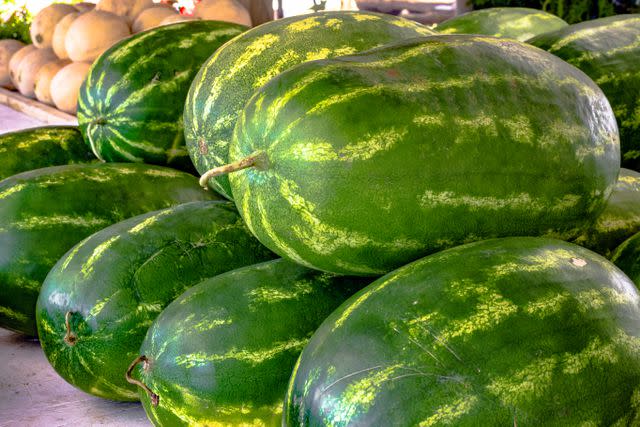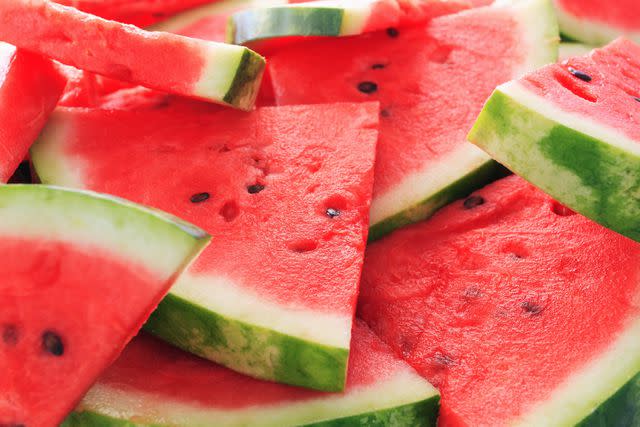The Only Way To Tell When a Watermelon is Ripe, According to a Farmer
- Oops!Something went wrong.Please try again later.
There's one clear sign you should look out for.
A sweet, juicy slice of watermelon is one of the best things about summertime, but way too many times I’ve stared dubiously at the pile of melons at the store, trying to decide which one to choose. Often when I get home and slice it open, the melon is a disappointing light pink and not at all sweet.
To avoid making the same mistake this season, I consulted with Jordan Carter, director of sales and marketing for Leger and Son, a three-generation watermelon farm that has been in business since 1965. The farm is located in Cordele, Georgia, which calls itself the “watermelon capital of the world.” They know their watermelons.

Simply Recipes / Getty Images
How To Choose a Perfect Watermelon
The best way to tell if a watermelon is ripe is by picking it up to look for a yellowish spot underneath. “It should be dull in color and the belly or underside of the watermelon should have a creamy yellow spot,” says Carter. “This is where the watermelon sat on the ground and ripened in the sun.”
Often called the field spot or ground spot, it should be a pale, creamy, buttery yellow if it’s ripe. If the area on the underside of the melon is light green or white, that means it hasn’t quite ripened yet.
When you pick up the melon to place it in your cart, be sure to get a good idea of its weight, too. “It should be heavy for its size because watermelons are 92% water,” says Carter. If you’re not sure, pick up another watermelon that’s the same size. The one that feels heavier will likely be more ripe.

Simply Recipes / Getty Images
What About Thumping?
Some people suggest that you can thump on the side of the melon to determine ripeness. This may not be the most scientific method and requires a pretty good ear, but there’s some truth to the thumping method.
“A ripe watermelon will have a dull hollow sound,” says Carter. “An immature watermelon will have a higher-pitched ping sound.”
Other Things To Look For
There are a few other indicators that can help you pick a ripe watermelon.
Look for webbing, the brown, coarse lines on the side of a melon that can resemble a spider web. There’s no science to prove it, but some people believe that webbing could be caused by pollination. The more webbing, the sweeter and riper the watermelon may be.
Next, scratch the watermelon's surface lightly with your fingernail. If the rind comes away easier and reveals a white-green area underneath, it’s ripe. If you scratch a watermelon that isn’t ripe, it just leaves an indentation and darker line, according to the Ohio State University College of Food, Agricultural, and Environmental Sciences.
Finally, pick a melon that doesn’t have cuts, dents, or visible bruises. Some minor scratching is OK. “Scratches usually come from handling as harvesting is very labor-intensive,” says Carter. “Most of this is removed during grading at the packing facility, but if a scratched watermelon makes its way to retail, it’s just cosmetic.”
Buy Watermelon In Season
For the best chances of a juicy, tasty watermelon, buy them in season which is roughly April to September, Carter says. Once cut from the vine, a watermelon has about three to four weeks of shelf life, she says.
If you cut open a watermelon and it isn’t quite as tasty as you like, you have a few options. “Make a recipe with other ingredients added or buy another one,” Carter says. Watermelon cocktails and highly-seasoned watermelon salads are great ways to use an underwhelming melon.
Read the original article on Simply Recipes.
